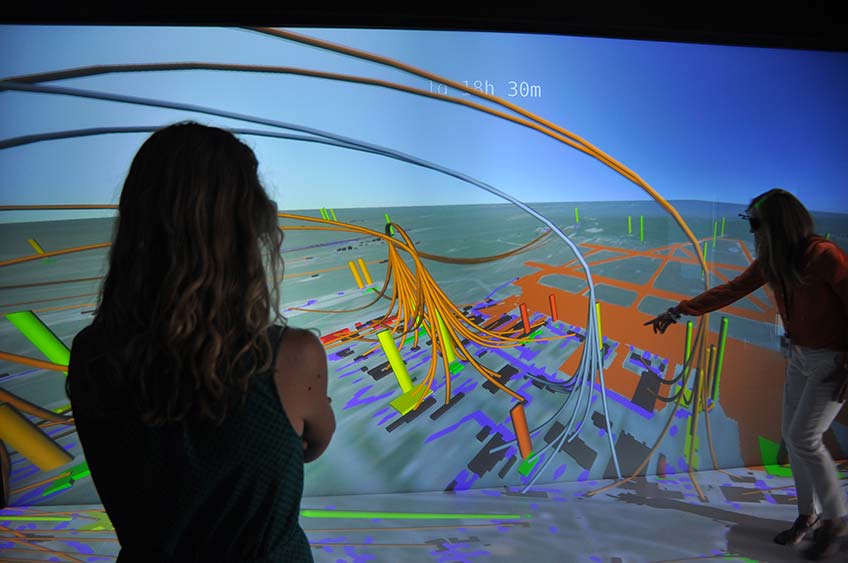Energy Resilience
Energy resilience research at the Energy Systems Integration Facility (ESIF) provides methodologies and visualization to help energy system stakeholders plan for and recover rapidly from disruptions to the electric grid.

Between aging infrastructure, more frequent severe storms, and the increasing risk of cyberattacks, the modern grid needs a greater capacity for resilience. The ability to simulate energy systems and evaluate resilience scenarios is essential to helping utilities, communities, and government agencies strengthen their resilience and energy security posture.
Energy resilience researchers are using the ESIF's capabilities to:
- Evaluate solutions for maintaining power during disruptions by configuring local microgrids to run autonomously
- Develop algorithms to control individual segments of the grid to bring them back online faster
- Simulate entire energy systems to help grid operators foresee potential vulnerabilities related to disruptions—and either avoid them or respond quickly to them to minimize grid outages.
The ESIF Advantage
High-Performance Computing and Visualization
Advanced machine-learning algorithms can help energy systems operators quickly identify, isolate, and respond to faults on the grid to minimize the duration and impact of disruptions. These resilience algorithms are tested and validated through the ESIF's supercomputer and hardware-in-the-loop simulation capabilities. Using the ESIF's advanced visualization capabilities, research teams can view large-scale simulations of an energy system to examine its baseline condition and potential vulnerabilities to hazards. Visualizations help with the development of new decision-making tools for resilience planning at many scales, such as campuses, military bases, neighborhoods, and cities.
Microgrid Evaluation Platform
The ESIF houses NLR's megawatt-scale microgrid evaluation platform, which allows utilities to connect their microgrids and run a variety of simulations. Microgrids can connect and disconnect from the grid and operate in grid-connected or island mode, which can result in improved customer reliability, cost reduction, and resilience to grid disturbances. Learn more about NLR's microgrid research capabilities.
Medium-Voltage Systems Research
The effects of physical disruptions on transmission systems with high levels of distributed energy resources can be evaluated at the ESIF's Medium-Voltage Outdoor Test Area. The research area can simulate two utility distribution feeders.
Cyber Range
NLR researchers use the Advanced Research on Integrated Energy Systems Cyber Range to emulate real-world power systems, simulate possible disruption scenarios, and visualize the consequences. From an isolated campus to an entire regional grid, the cyber range can perform evaluations at the scale needed to match the complexity of modern multilayer grids. This unique capability makes it possible to safely explore energy system vulnerabilities and mitigation effectiveness by integrating physical hardware throughout the ESIF with the virtual environment. The visualization application allows teams to view both the security and resilience of a given system under a variety of cyber, physical, and natural threat scenarios.
Contact
Eliza Hotchkiss
Group Manager, Resilient Systems Design and Engineering
Share
Last Updated Jan. 15, 2026
